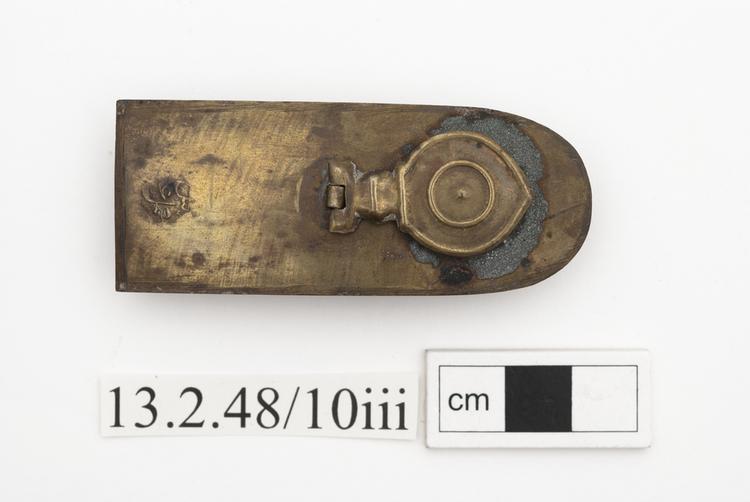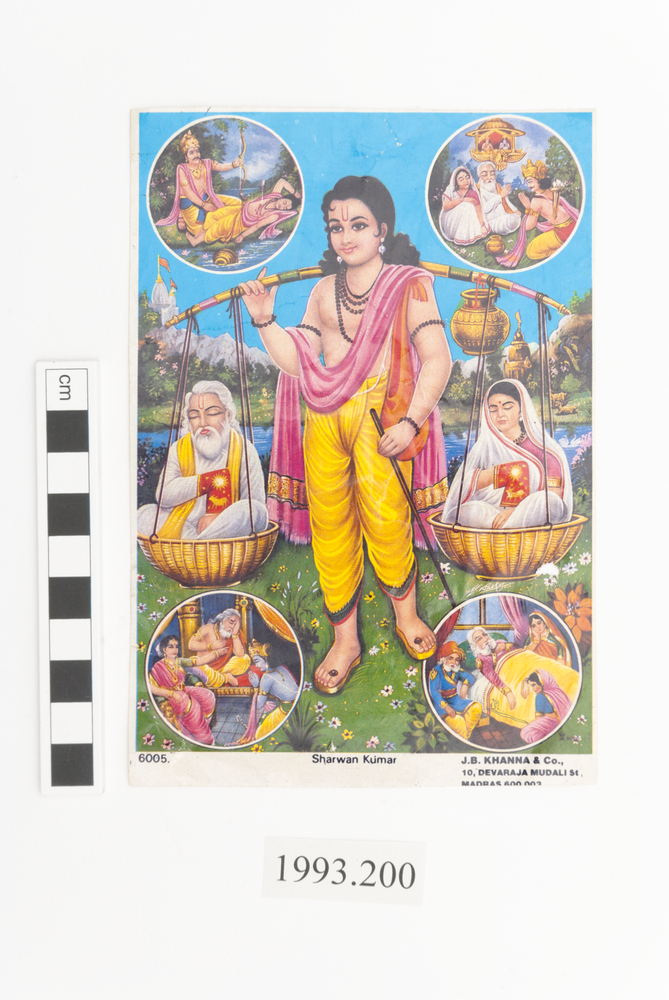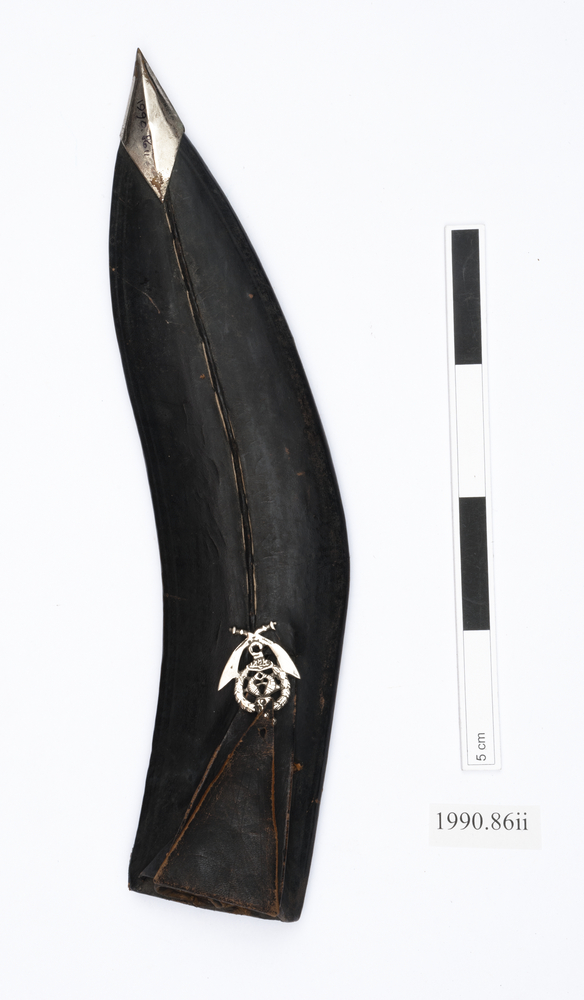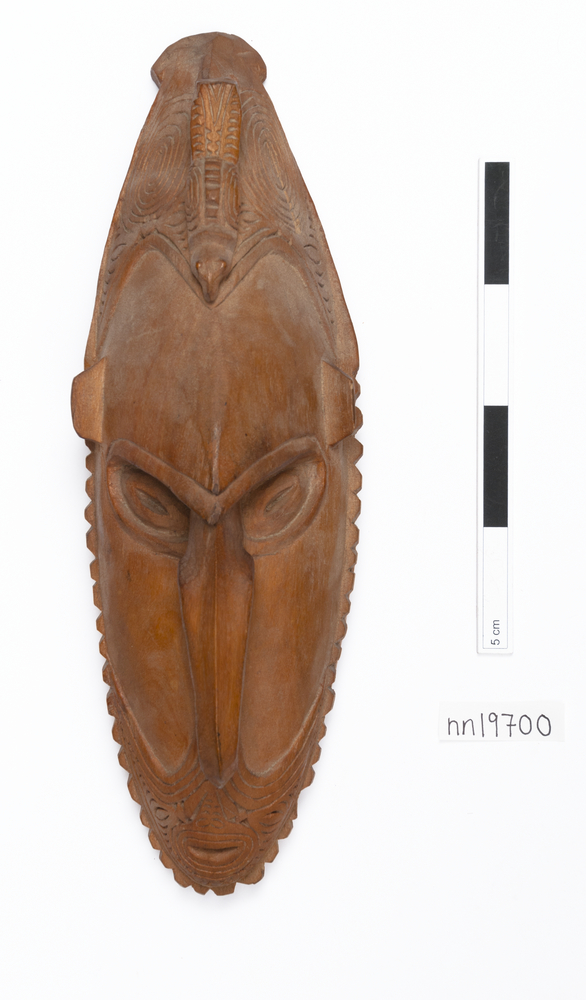

Red velvet-covered wooden scabbard fitted with a gilt copper locket (top mount) chased with flowering foliage. On the back edge of the locket is a small pierced facetted knop intended to retain a fabric or leather loop which fits over the quillonand retains the sword in its scabbard. The decoration of the locket strongly suggests that this is product of the Indian city of Bhuj.
This sword is closely related to sword NN18556, but is somewhat superior in quality. The blade is one of a large and frequently encountered group of blades probably made in Syria (some sources say Iran). They are straight, single edged, and made from watered steel (called johar, alsodaban)of dark colour (calledKhara, also Qara) chiselled with pious Islamic inscriptions within a long rectangular cartouche, together with smaller cartouches which contain the Persian lion and simple invocations such as “Oh! Wish-fulfiller�.They are often enhanced with gold damascened decoration. These blades are commonly found on assorted Arab swords, and were exported in large numbers to the Arabian Peninsula, and to within the Ottoman Empire. See A. Jacob “Les armes blanches du monde islamique� Bologna, 1985. pp. 109 and 134. See also ‘Weapons of the Islamic World’ (author not acknowledged) King Faisal Center for Research and Islamic Studies, Riyadh, 1991, pp. 64-68.






